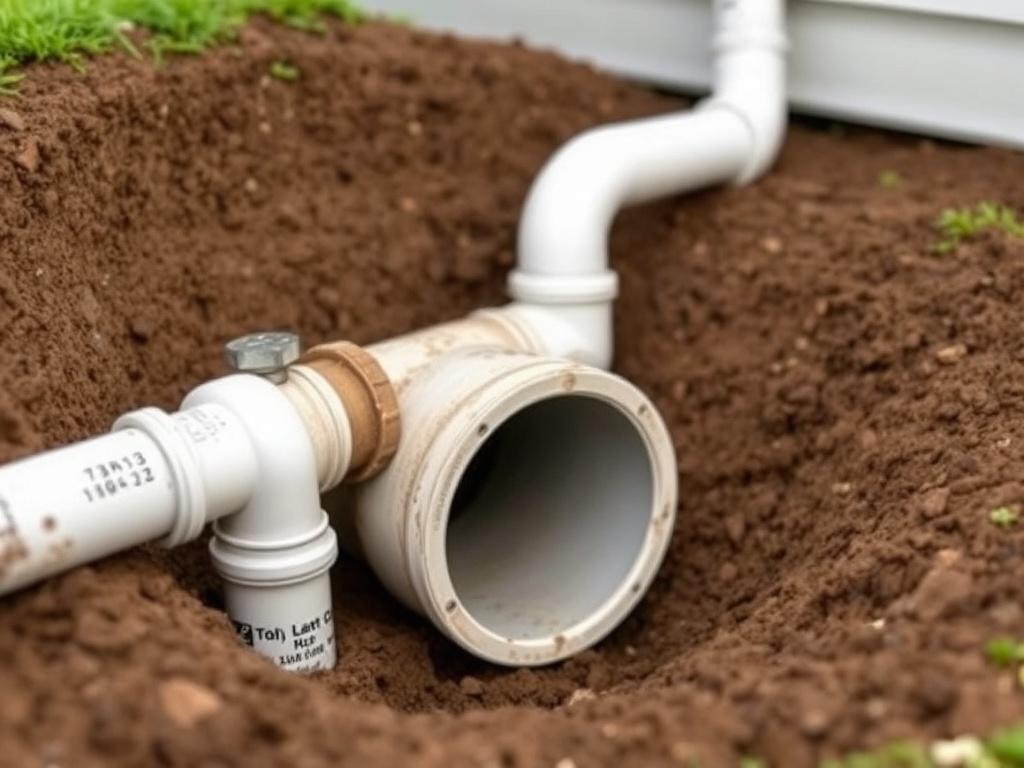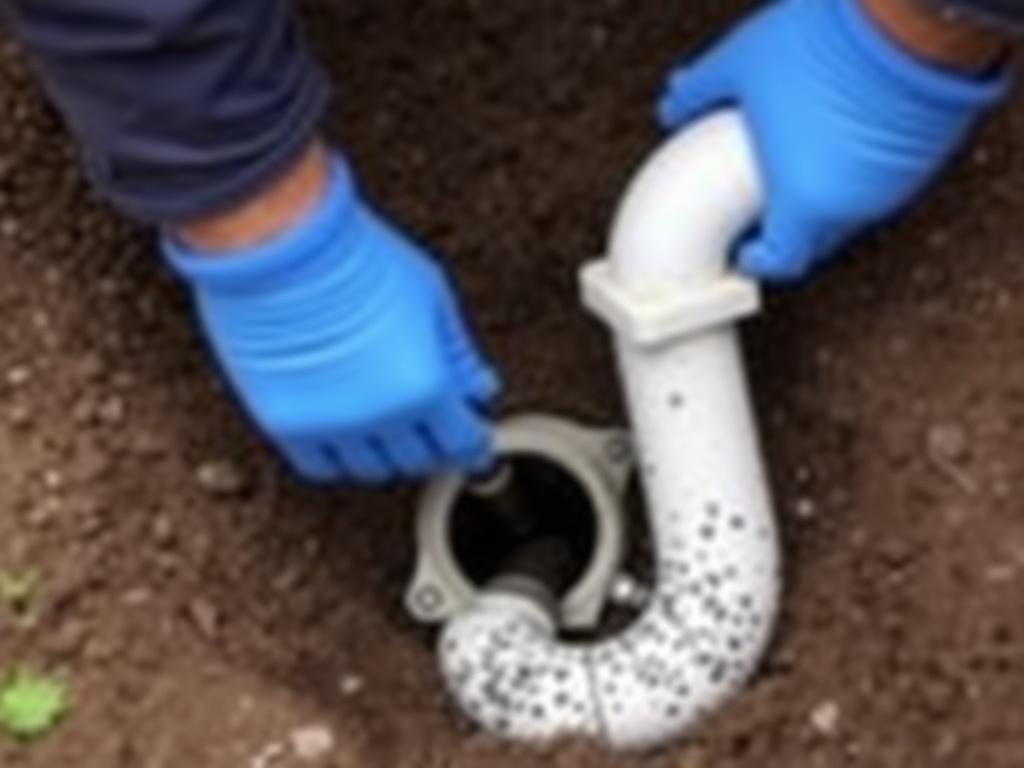Dealing with a septic tank pipe blockage can be a frustrating experience, but it’s a common problem that many homeowners face at some point. When your septic system isn’t draining properly or you notice backups in your drains, it’s often a sign of a pipe blockage somewhere within the septic system. Understanding how to fix a septic tank pipe blockage not only saves you from costly professional repairs but also helps maintain the health of your entire septic system. In this detailed guide, we will walk you through everything you need to know, from identifying signs of a blockage to practical DIY steps and when to call in a professional.
- Understanding Your Septic Tank and the Role of Its Pipes
- Common Causes of Septic Tank Pipe Blockages
- Signs You Have a Septic Tank Pipe Blockage
- Tools and Materials Needed to Fix a Septic Tank Pipe Blockage
- Step-by-Step: How to Fix a Septic Tank Pipe Blockage
- Step 1: Locate Your Septic Tank and Access Points
- Step 2: Inspect the Pipes for Visible Blockages
- Step 3: Use a Plumbing Snake or Auger to Clear the Blockage
- Step 4: Consider High-Pressure Water Jetting for Stubborn Clogs
- Step 5: Reassemble and Flush the System
- Step 6: Monitor for Reoccurrence and Maintain Your System
- How to Prevent Future Septic Tank Pipe Blockages
- Common Mistakes to Avoid When Dealing with Septic Tank Pipe Blockages
- When to Call a Professional for Septic Tank Pipe Blockage
- Conclusion
Understanding Your Septic Tank and the Role of Its Pipes

A septic tank is an underground wastewater treatment structure, typically used in rural areas without centralized sewer systems. Your household wastewater flows into the septic tank, where solids settle at the bottom and lighter materials float to the top. The clearer water in the middle then exits through the outlet pipe into the drain field, where further natural filtration takes place.
The pipes in your septic system connect various components: from your home’s plumbing to the septic tank, and then from the tank to the drain field. Pipes can get clogged due to a buildup of solids, grease, or foreign objects, resulting in slow drainage, foul odors, or even sewage backup. Fixing a septic tank pipe blockage means restoring smooth wastewater flow and preventing more serious damage to the system.
Common Causes of Septic Tank Pipe Blockages
It’s important to know what causes septic tank pipe blockages so you can prevent future problems. Some frequent causes include:
- Accumulated Solids: When solids don’t properly break down or exit the tank, they can clog the outlet pipe.
- Grease and Fats: These substances harden inside pipes, restricting water flow.
- Foreign Objects: Items like wipes, feminine hygiene products, or excessive toilet paper can clog pipes.
- Tree Roots: Roots naturally seek moisture and can invade pipes, causing physical blockages.
- Pipe Damage or Collapse: Old or poorly installed pipes may crack or deform, leading to blockages or leaks.
Recognizing these potential causes can guide your approach to fixing the blockage effectively.
Signs You Have a Septic Tank Pipe Blockage
Before you dive into fixing your septic tank pipe, it’s essential to confirm that a blockage is the actual problem. Knowing the warning signs allows you to act promptly.
- Slow Drains: Water drains slowly in sinks, tubs, or toilets.
- Backup of Sewage: Wastewater backs up into your home, sometimes with an unpleasant odor.
- Gurgling Sounds: Pipes or drains make unusual noises as trapped air escapes.
- Pooling Water or Mud: You notice wet spots or soggy ground around the septic tank or drain field.
- Foul Odors: Persistent sewage smells around the septic tank area or inside the home.
If you observe any combination of these signs, it’s likely your septic tank pipe is blocked and needs attention.
Tools and Materials Needed to Fix a Septic Tank Pipe Blockage
Before attempting any repair, ensure you have the right tools and materials on hand to get the job done safely and effectively. Here’s a handy table outlining what you’ll need:
| Tool or Material | Purpose |
|---|---|
| Plumbing Snake or Auger | To break up or retrieve blockages inside pipes |
| Pipe Wrench | To loosen or tighten pipe fittings |
| High-Pressure Water Jet (Optional) | Clears stubborn blockages using water at high pressure |
| Protective Gloves and Eye Wear | Ensure safety from harmful bacteria and debris |
| Bucket and Towels | To catch spills and clean up |
| Pipe Inspection Camera (Optional) | To visually inspect pipes for blockages or damage |
Having these at your disposal will increase your chances of success and keep you safe.
Step-by-Step: How to Fix a Septic Tank Pipe Blockage

Now, let’s dive into the detailed process of fixing a septic tank pipe blockage. The steps below are designed to give you a clear, safe approach to clearing the blockage yourself.
Step 1: Locate Your Septic Tank and Access Points
Start by locating your septic tank — this is usually marked on your property’s blueprints or can be found by looking for a metal or plastic lid in your yard. The outlet pipe connecting to the drain field typically sits inside the tank or just outside it. Opening the septic tank should be done carefully to avoid exposure to harmful gases or contaminants. Always wear gloves and protective eye gear.
Step 2: Inspect the Pipes for Visible Blockages
Once you have access, inspect the outlet pipe connecting your septic tank to the drain field. Look for any visible clogs or buildup of solids. Using a pipe inspection camera can be very beneficial here to spot blockages or damage without dismantling the pipes.
Step 3: Use a Plumbing Snake or Auger to Clear the Blockage
Insert a plumbing snake into the pipe to break up or pull out any material causing the blockage. Rotate the snake carefully to avoid damaging the pipe. For stubborn blockages, try to push through slowly and dislodge the obstruction. Pull debris out as you go along.
Step 4: Consider High-Pressure Water Jetting for Stubborn Clogs
If the snake doesn’t clear the blockage fully, using a high-pressure water jet can blast away grease, roots, or hardened waste blocking the pipe. This requires either renting a water jet machine or calling a professional who specializes in this service.
Step 5: Reassemble and Flush the System
After the blockage is cleared, reassemble any pipe fittings you removed. Flush the system by running water through your home’s plumbing to test flow through the septic system. Ensure water exits freely without backing up.
Step 6: Monitor for Reoccurrence and Maintain Your System
Keep an eye on your drains and septic system performance in the weeks following to make sure the blockage does not return. Practicing regular septic tank maintenance, like pumping every 3-5 years, helps reduce the chance of future pipe blockages.
How to Prevent Future Septic Tank Pipe Blockages
Fixing the blockage is only half the battle. Preventative care can save you time, money, and headaches down the road. Here are some simple steps to follow:
- Limit What Goes Down the Drain: Avoid flushing non-biodegradable items like wipes, feminine products, and excessive toilet paper.
- Don’t Pour Grease Down the Sink: Grease solidifies and clogs pipes, so dispose of cooking oils properly.
- Regular Septic Tank Pumping: Schedule professional pumping every 3-5 years to remove sludge buildup.
- Plant Trees Strategically: Keep trees and shrubs away from septic lines to prevent root intrusion.
- Use Septic-Safe Cleaners: Harsh chemicals can kill beneficial bacteria, upsetting septic tank balance and increasing sludge.
- Inspect System Annually: Routine check-ups help detect issues before they become blockages.
Common Mistakes to Avoid When Dealing with Septic Tank Pipe Blockages
In addition to knowing the right steps, avoid these pitfalls that can worsen your septic system problems:
| Mistake | Why to Avoid It |
|---|---|
| Using Chemical Drain Cleaners | Can damage pipes and kill necessary bacteria in the septic tank |
| Ignoring Warning Signs | Leads to worse blockages and costly repairs |
| Attempting Major Repairs Without Experience | Risk of injury and further damage to the septic system |
| Not Wearing Protective Gear | Exposure to harmful pathogens and dangerous gases |
Avoiding these mistakes will keep your septic system safe and functioning.
When to Call a Professional for Septic Tank Pipe Blockage
While many minor septic tank pipe blockages can be fixed with a DIY approach, there are times when professional help is necessary. You should call a septic service expert if:
- The blockage persists despite your efforts to clear it.
- You suspect pipe damage or collapse.
- You don’t feel comfortable opening the septic tank or handling sewage.
- The septic system has not been pumped in many years.
- Root intrusion is suspected, requiring specialized removal services.
Professional septic contractors have the experience, tools, and training to handle complex blockages safely and thoroughly.
Conclusion
Fixing a septic tank pipe blockage may initially seem daunting, but with the right knowledge, tools, and approach, it’s a manageable task for many homeowners. Remember, identifying the blockage early through warning signs can save you from larger problems and expenses. By following the step-by-step guide to clearing blockages and embracing good septic system maintenance habits, you can keep your pipes flowing freely and your septic system running smoothly for years. Don’t hesitate to call in professionals for help with particularly stubborn or complex blockages, and always prioritize safety to protect yourself and your home. Your septic tank pipes might be out of sight, but with regular care and attention, they won’t be out of mind.
Помогла вам статья?






